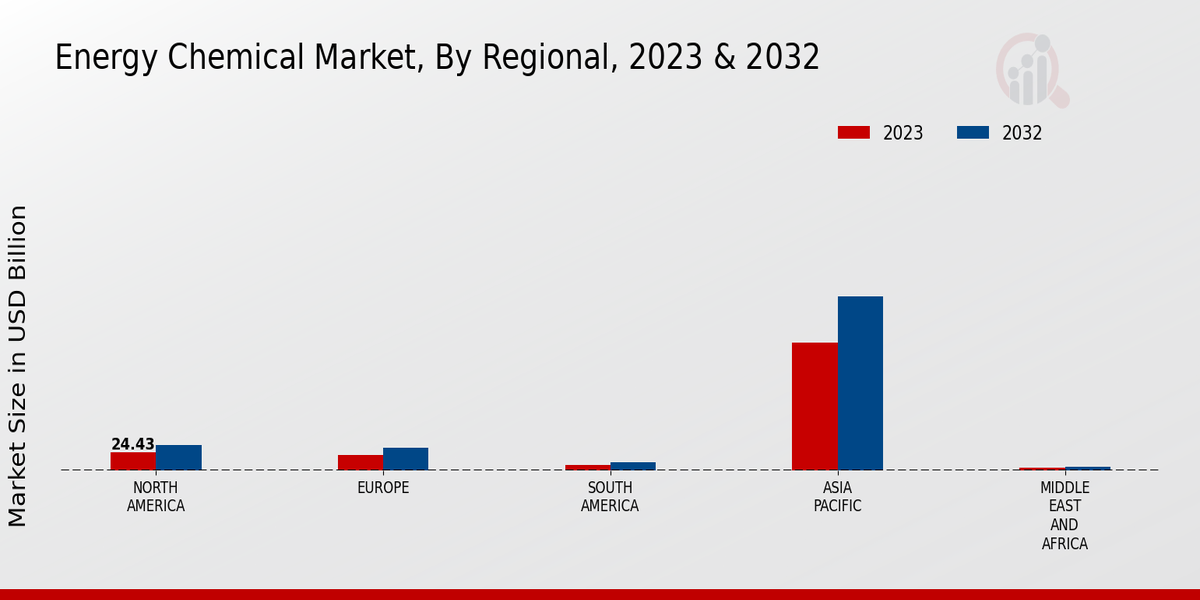Rising Global Population and Urbanization
The Global Energy Chemical Market Industry is significantly influenced by the rising global population and urbanization trends. As more individuals migrate to urban areas, the demand for energy-intensive services and products increases. This urban shift necessitates enhanced energy supply and distribution systems to meet the growing consumption levels. The United Nations projects that by 2030, nearly 60% of the world's population will reside in urban areas, further straining existing energy resources. Consequently, the market is poised for growth, as stakeholders adapt to the evolving energy landscape and seek innovative solutions to address urban energy demands.
Growing Demand for Renewable Energy Sources
The Global Energy Chemical Market Industry is experiencing a notable shift towards renewable energy sources, driven by increasing environmental awareness and regulatory pressures. Governments worldwide are implementing policies to reduce carbon emissions, which has led to a surge in investments in renewable technologies. For instance, the International Energy Agency indicates that renewable energy capacity is expected to grow significantly, contributing to the overall market growth. This transition is projected to influence the Global Energy Chemical Market, with an estimated market value of 248.6 USD Billion in 2024, as stakeholders seek sustainable alternatives to traditional fossil fuels.
Increasing Investments in Energy Infrastructure
Investment in energy infrastructure is a significant driver of the Global Energy Chemical Market Industry. Governments and private entities are allocating substantial funds to upgrade and expand energy facilities, including refineries, pipelines, and renewable energy installations. This trend is particularly evident in emerging economies, where energy demand is surging. According to the U.S. Energy Information Administration, global energy investments are projected to rise, supporting the growth of the market. The anticipated compound annual growth rate of 3.69% from 2025 to 2035 underscores the importance of infrastructure development in meeting future energy needs.
Technological Advancements in Energy Production
Technological innovations are playing a crucial role in shaping the Global Energy Chemical Market Industry. Advances in extraction techniques, such as hydraulic fracturing and horizontal drilling, have enhanced the efficiency of oil and gas production. Furthermore, developments in carbon capture and storage technologies are enabling industries to mitigate emissions effectively. These advancements not only improve the economic viability of energy projects but also align with global sustainability goals. As a result, the market is expected to grow, reaching an estimated value of 370.4 USD Billion by 2035, reflecting the positive impact of technology on energy production and consumption.
Regulatory Frameworks and Environmental Policies
Regulatory frameworks and environmental policies are pivotal in shaping the Global Energy Chemical Market Industry. Governments are increasingly enforcing stringent regulations aimed at reducing greenhouse gas emissions and promoting cleaner energy sources. This regulatory environment encourages companies to invest in cleaner technologies and sustainable practices. For instance, the European Union's Green Deal aims to make Europe climate-neutral by 2050, influencing energy policies globally. Such initiatives are likely to drive market growth, as industries adapt to comply with new regulations while pursuing sustainable energy solutions.



















Leave a Comment